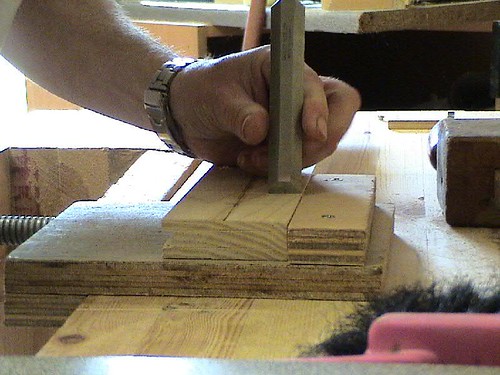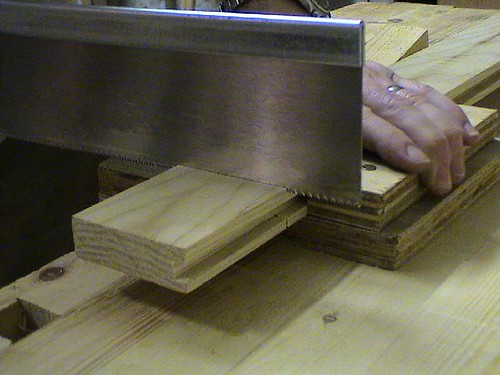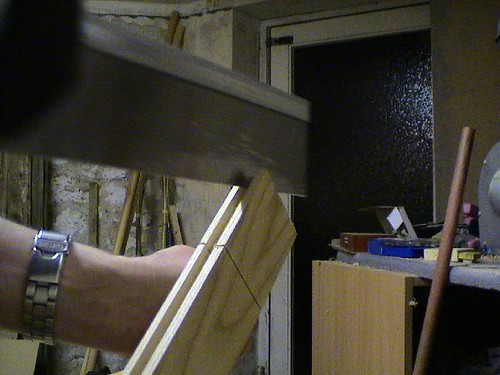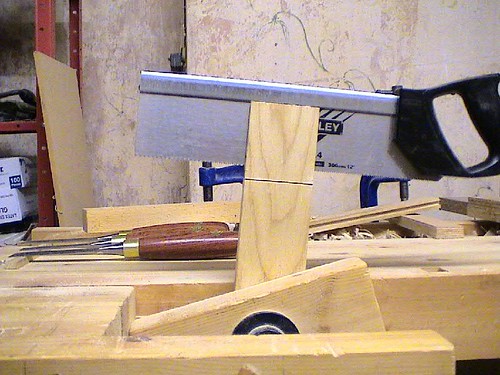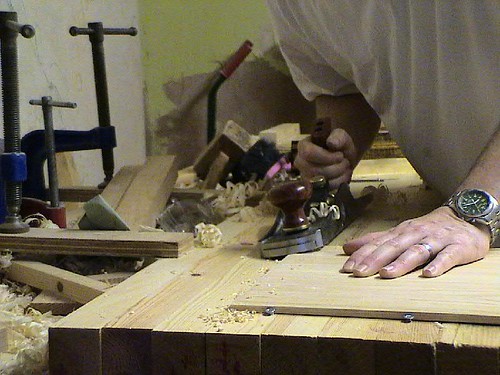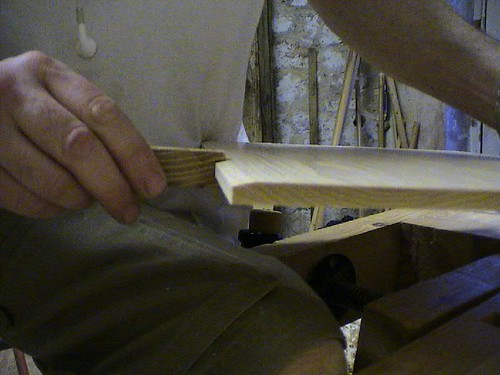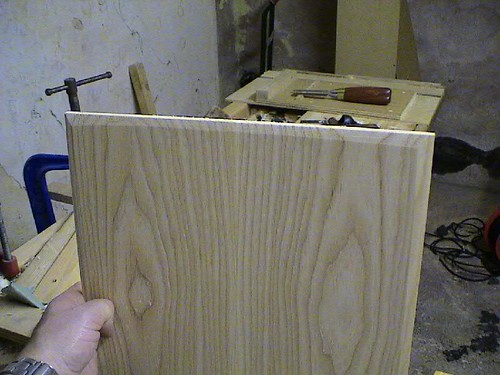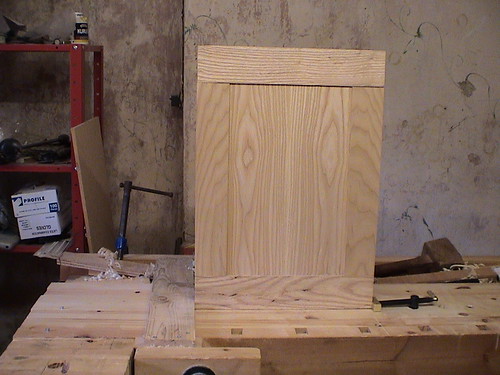Some progress has been made but not as much as I would have liked.
After gluing up the back panel I have moved on to the frame. This is to be bridle joints all round and the panel itself will float in the frame.
The frame pieces were marked up for the bridle joints and cut out. I marked out with a scratch awl and mortise gauge and then deepened the tenon shoulder lines with a chisel.
The saw sat nicely in the deeper cut and gave me nice neat shoulders.
Sawing the cheeks was amusing. It all started well enough
Does this justify a new saw?
Back to the bench hook to cut off the waste and then I used a chisel to take out the rest of the cheek which as it had already been sawn at the shoulder came away cleanly.
The mortise part of the joint was a little more complex. First I drilled out the innermost end of the mortise on the bench drill (which is of course powered by hamsters) and then sawed out the waste in the same way as for the tenons. The only picture I have of this is one showing that the calibration ring of the drill table is inaccurate.
So with the frame all cut out I retrieved the panel from the clamps and gave it a final flattening with the jointer though I was pleased to see it wasn't too far off. Once it was all flat and smooth I beveled the edges slightly by eye.
I tested to make sure the beveled edge fittend the frame with an offcut of the frame.
The panel is lose enough to be moved in the frame by hand but there isnt enough slop for it to rattle about.
The end result was quite pleasing I thought.
After all that the panel was slotted into the frame and the frame glued up. The finished assembly looks like this.
Next step is to join the carcass together drop the panel in the back and move on to the doors.
Cheers Mike








